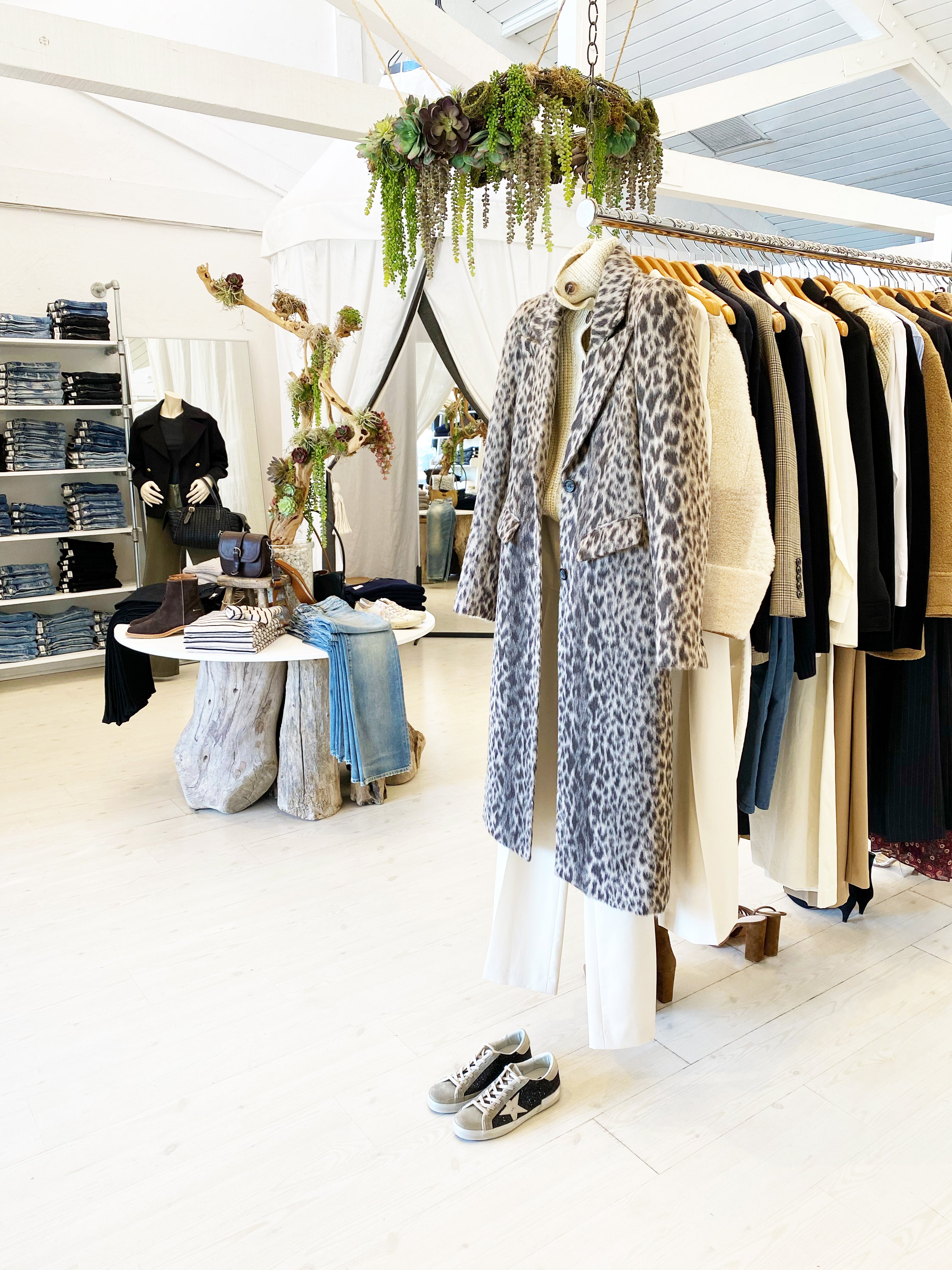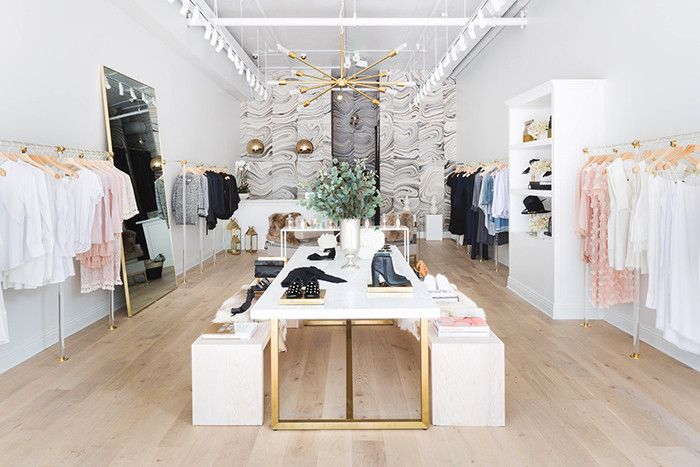A Beginner's Overview to Navigating the Boutique Fashion Scene
A Beginner's Overview to Navigating the Boutique Fashion Scene
Blog Article
Exploring the Evolution and Effect of Garments on Modern Style Trends
The evolution of clothing has actually significantly affected modern-day style patterns, merging historical criteria with innovative innovations. Iconic numbers like Coco Chanel and Yves Saint Laurent reinvented the garment industry by introducing concepts that focus on comfort and availability, which continue to reverberate today. Technical strides in locations such as 3D printing and clever textiles are redefining design opportunities and consumer experiences (boutique fashion). Furthermore, the expanding emphasis on inclusivity and sustainability is improving sector requirements. As we take into consideration these multifaceted impacts, one must question how these components jointly redefine style's role in reflecting and forming contemporary culture.
Historic Fashion Influencers
In the tapestry of fashion history, certain numbers have left an indelible mark, shaping the trends and styles that specify entire eras. Coco Chanel, an advanced designer, redefined females's style by introducing comfy, sophisticated clothing that left from restrictive bodices. Her renowned Chanel fit and little black gown have ended up being classic staples in closets worldwide. Christian Dior's post-war "New Look" in 1947, with its celebration of womanhood via full skirts and cinched waists, marked a return to luxury and has actually proceeded to influence developers.
Elsa Schiaparelli is an additional pivotal number, renowned for her progressive designs that incorporated surrealist art, collaborating with Salvador Dalí to develop whimsical items that challenged traditional aesthetic appeals. Her ingenious use shade and vibrant patterns resounds in modern style. Yves Saint Laurent, at the same time, equalized haute couture with prêt-à-porter collections, bringing runway styles to the masses and setting a precedent for contemporary ready-to-wear lines.
These dreamers, among others, not just revolutionized fashion in their times however also set sustaining patterns that reverberate in today's fashion business, providing a foundation upon which modern designers continue to develop and innovate. Their traditions underscore the relevance of imagination and bold in fashion's ever-evolving story.
Technological Advancements in vogue
Amidst the dynamic landscape of the style industry, technological developments stand at the forefront of innovation, reshaping just how designers create and customers engage with fashion. The combination of 3D printing has actually transformed layout processes, allowing designers to experiment with complex structures and sustainable products that were formerly inconceivable. This modern technology promotes rapid prototyping, minimizing waste and speeding up production times.

Smart textiles, installing modern technology right into textiles, are likewise transforming the sector. Developments like temperature-regulating and self-cleaning materials supply enhanced functionality and convenience. Wearable technology, incorporating features like physical fitness monitoring and communication, adds a brand-new dimension to fashion, combining aesthetics with usefulness.
Cultural Changes and Design
As technological improvements continue to reshape the fashion market, social changes are similarly significant, redefining design and consumer preferences. In current years, the surge of social networks systems has accelerated the circulation of global style patterns, allowing varied social influences to coexist and assemble. This electronic interconnectivity has actually helped with the quick exchange of concepts, resulting in a much more comprehensive and eclectic analysis of style that shows the moved here multifaceted nature of modern society.
Social recognition and admiration have actually prompted designers to attract inspiration from a more comprehensive spectrum of ethnic and historic contexts, incorporating standard themes with contemporary visual appeals. This combination has actually resulted in style that resonates with a broader audience, advertising a sense of identity and belonging throughout various demographics. Furthermore, the boosting need for customization has actually driven brand names to use personalized alternatives, allowing customers to reveal uniqueness while reflecting their social heritage.
Additionally, moving social worths have influenced fashion, with inclusivity and variety coming to be central motifs. The industry has started to embrace versions and influencers of different physique, ethnic cultures, and sex identities, difficult standard beauty criteria. This change highlights the power of cultural shifts in shaping the future of style, as style ends up being a more genuine expression of collective and personal identity.
Sustainability and Modern Design
While the fashion sector continues to develop, the vital for sustainability has become significantly immediate, influencing contemporary style methods. This shift aims to address ecological concerns and moral considerations, resulting in a reevaluation of typical production techniques. Designers are now incorporating lasting products, such as natural cotton, recycled polyester, and biodegradable fabrics, into their collections, reducing the ecological footprint of fashion. The rise of sluggish style, which stresses high quality over quantity, encourages customers to spend in classic pieces instead than transient fads.
In addition, modern-day design is identified by its development in reducing waste and advertising circularity. This technique not only minimizes environmental influence however also improves the social responsibility of style houses.

Future Trends in Fashion

Sustainability will remain to be a driving force in forming future style patterns. The market is significantly embracing environmentally friendly materials and ethical production techniques, reacting to an expanding consumer need for accountable practices. Innovations such as bio-fabricated products and closed-loop recycling systems are set to redefine exactly how clothes is generated and consumed, minimizing ecological effect while preserving design and quality.
Cultural changes, consisting of the rise of inclusivity and diversity, will also play a pivotal function. As society Our site becomes a lot more familiar with social concerns, fashion is expected to come to be a system for expression and change. Developers will likely focus on producing collections that show a wider series of experiences and identities, championing representation and accessibility.
Final Thought
The development of garments significantly influences modern style patterns, where historic impacts combine with modern layouts. This continuous development emphasizes style's duty as a mirror to social values and technological improvement, recommending a future abundant with development and inclusivity.
The evolution of clothing has considerably affected modern-day style patterns, combining historical criteria with sophisticated innovations.In the middle of the vibrant landscape of the fashion market, visit the website technical developments stand at the leading edge of innovation, reshaping how developers produce and customers engage with fashion.While the style industry proceeds to advance, the imperative for sustainability has actually ended up being increasingly urgent, affecting contemporary design practices. As sustainability comes to be ingrained in modern design, it paves the means for a more accountable and aware style industry.
The development of garments significantly influences modern-day style patterns, where historical influences combine with contemporary designs.
Report this page